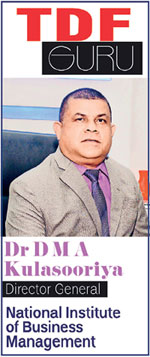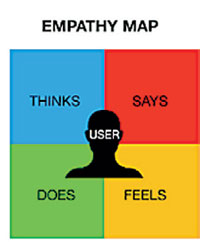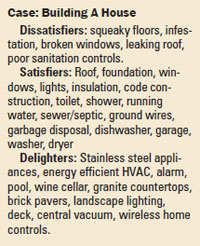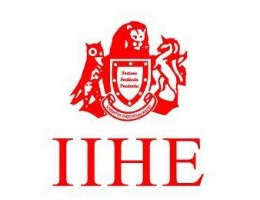Corporate Branding by Design
 Today great design has a critical role to play in building a great brand. A brand is not your logo or ID system,” says Robert Brunner: the founder of the design shop Ammunition. “It’s a gut feeling people have about you. When two or more people have the same feeling, you have a brand. You get that feeling via smart design, which creates the experiences people have with the brand. Design thinkers consider that the people who face problems are the ones who hold the key to their problem’s answer. Therefore, empathy is the centerpiece of a human-centered design process. People are emotional beings and they have emotional relationships with brand they trust. Hence design thinkers need to make it happens. There are numerous tools being applied to understand hidden needs of customers and some of them are widely used by practitioners.
Today great design has a critical role to play in building a great brand. A brand is not your logo or ID system,” says Robert Brunner: the founder of the design shop Ammunition. “It’s a gut feeling people have about you. When two or more people have the same feeling, you have a brand. You get that feeling via smart design, which creates the experiences people have with the brand. Design thinkers consider that the people who face problems are the ones who hold the key to their problem’s answer. Therefore, empathy is the centerpiece of a human-centered design process. People are emotional beings and they have emotional relationships with brand they trust. Hence design thinkers need to make it happens. There are numerous tools being applied to understand hidden needs of customers and some of them are widely used by practitioners.
Empathy Map
Empathy mapping is a qualitative method, so you will need qualitative inputs: user interviews, field studies, diary studies, listening sessions, or qualitative surveys. What users think and feel about the product and services (Implicit) and what users say and do with the products have to be listed in a map based on the research findings.

Once the research is done on inputs, mapping as a team is to be initiated. At the beginning, everybody should read through the research individually. As each team member digests the data, they can fill out sticky notes that align to the four quadrants. Next, team members can add their notes to the map on the whiteboard. In this step, the team moves through the stickies on the board collaboratively and clusters similar notes that belong to the same quadrant. Name clusters with themes that represent each group. Repeat themes in each quadrant if necessary. The activity of clustering facilitates discussion and alignment: the goal is to arrive at a shared understanding of the user by all team members. Once the empathy map is clustered, you can begin to vocalize and align as a team on your findings. What outliers (or data points that did not fit in any cluster) are there? What themes were repeated in all the quadrants? What themes only exist in one quadrant? What gaps exist in our understanding? Finally, these inputs will be used to define the real problem of users leading to create ideas for improvement.
 Kano Model
Kano Model
One empathetic theory that has helped product designers gain clarity on user requirements is the Kano Model. The Kano Model is used to visually model the customer provided characteristics versus the level of satisfaction each characteristic delivers. It is a product development and customer satisfaction tool that categorizes customer preferences. “The Kano Model is an insightful way of understanding and categorizing five types of customer requirements (or potential features) for new products and services.” The categorized customer requirements, in essence, helps product leaders prioritize and address the shortcomings in a structured way.
- Dissatisfiers - annoying features or characteristics to be avoided
- Satisfiers - basics - must have characteristics
- Delighters - surprise - innovators - unexpected features
 It is a graphical model that shows the relationship between each characteristic to the level of customer satisfaction. It is used to organize and prioritize activities to design and/or improve. To find out which characteristics deliver on which level of satisfaction it is necessary to develop a questionnaire, interview, use focus groups, conduct research or otherwise find the customer stated specific characteristic and its expected level of satisfaction. It is important to mention the categorization or classification of user requirements to understand the concept of integration between the principle of design thinking and Kano Model. Typically, requirements can be classified in the level of importance as basic, performance related, attractive, unimportant and undesired. Engineering a Minimal Viable Product (MVP) with limited features can narrow a defined market within weeks. Therefore, clearly interpreting the “user requirements” and thus delivering user experience (UX) are allowing organizations to quickly bring their products to market and to respond to the increased demand. Good designers are always open minded, observant, good listeners and curious. Next phase of design thinking process is to define critical to quality (CTQ), critical to cost (CTC) and critical to time (CTT).
It is a graphical model that shows the relationship between each characteristic to the level of customer satisfaction. It is used to organize and prioritize activities to design and/or improve. To find out which characteristics deliver on which level of satisfaction it is necessary to develop a questionnaire, interview, use focus groups, conduct research or otherwise find the customer stated specific characteristic and its expected level of satisfaction. It is important to mention the categorization or classification of user requirements to understand the concept of integration between the principle of design thinking and Kano Model. Typically, requirements can be classified in the level of importance as basic, performance related, attractive, unimportant and undesired. Engineering a Minimal Viable Product (MVP) with limited features can narrow a defined market within weeks. Therefore, clearly interpreting the “user requirements” and thus delivering user experience (UX) are allowing organizations to quickly bring their products to market and to respond to the increased demand. Good designers are always open minded, observant, good listeners and curious. Next phase of design thinking process is to define critical to quality (CTQ), critical to cost (CTC) and critical to time (CTT).
For your feedback: [email protected]









































.jpg)

.jpg)
.jpg)
.jpg)
.jpg)
